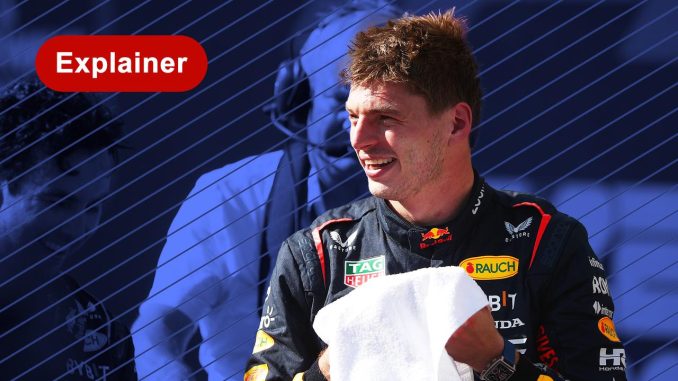
Introduction
The Hungarian Grand Prix saw Max Verstappen dominate on Sunday after a challenging qualifying session. Driver Ho-Pin Tung sheds light on Red Bull’s deliberate race-focused set-up and the advantages it brought to their performance on Sunday.
Pre-Race Set-Up Strategy
Red Bull made a conscious decision to prioritize the race set-up over qualifying. In hot conditions, reducing tire overheating and wear becomes crucial. The team opted for a softer suspension and damping set-up, which puts less stress on the tires but can feel annoying and less responsive for the driver.
Tung explains, “That feeling of a softer car can sometimes cause a lack of confidence and especially a feeling with the car.” This approach might have affected Verstappen’s performance in qualifying but strengthened the car’s performance during the race.
Hot Asphalt Advantage
Contrary to expectations, the high temperatures on Sunday worked in Red Bull’s favor. Tung attributes this to the deliberate set-up choices the team made. He states, “The fact that Red Bull was not in the usual form in qualifying shows that conscious choices were made there to focus specifically on the race.”
With a soft car set-up, Red Bull could take better advantage of the track’s grip, which improves as the race progresses. The hot asphalt helped maximize the performance of the softer car, giving Verstappen an edge over his competitors.
The Challenge of a Full Tank
Lewis Hamilton showcased impressive pace in qualifying and with an empty tank at the end of the race. However, the performance drop with a full tank can be explained by the same set-up choices. Tung elaborates, “If you have a lot of fuel in a car […] you actually have to drive a lot further below your limit to keep the tire temperature under control.”
Additionally, cooling issues were reported for Hamilton’s car, which becomes more challenging when carrying extra weight. As the fuel load decreases throughout the race, the car becomes lighter and allows drivers to push closer to the limit without overheating their tires.
Sergio Pérez’s Performance
Sergio Pérez was praised for his catch-up race, but Tung highlights that achieving such a recovery is the minimum expectation for a driver in a Red Bull. Pérez struggled to bridge the gap with Verstappen in qualifying and faced the challenges of traffic and tire management during the race.
Tung notes that the cooler temperatures last year were more favorable for the Red Bull cars. Pérez’s solid performance was overshadowed by Verstappen’s spectacular drives in similar conditions, further emphasizing the difference in their performances.
Oscar Piastri’s Sacrificed Position
Oscar Piastri’s second-place position was sacrificed in favor of Lando Norris due to an early pit stop by Norris to prevent an undercut from Hamilton. Tung believes Piastri might feel disappointed with this outcome but also acknowledges that he is a rookie learning the nuances of tire management in critical conditions.
The heat on Sunday played a significant role, as Tung explains, “Being behind another car then has an extra effect and disadvantage. Everything overheats, because you lose some downforce.” Norris’s better speed after having a clear track and air highlights the challenges of driving in traffic under such conditions.
Comparison of Ricciardo and Tsunoda
Daniel Ricciardo’s performance and Yuki Tsunoda’s struggles in the race can be attributed to various factors. Tung suggests that Tsunoda may have been affected by a challenging qualifying session, which led to a lack of confidence and opportunistic driving during the race.
On the other hand, Ricciardo drove without pressure and regaining positions after starting last. His strategy and tire management skills played a crucial role in his success. Tung comments, “That’s great, especially if you’ve been away for a while.”
Conclusion
The deliberate race-focused set-up by Red Bull played a significant role in Verstappen’s dominant performance at the Hungarian Grand Prix. The softer car set-up allowed Red Bull to leverage the track’s grip and minimize tire overheating. While there were challenges in qualifying and with a full fuel tank, the strategy proved successful in the race. The performances of Pérez, Piastri, Ricciardo, and Tsunoda demonstrated the influence of set-up choices, track conditions, tire management, and individual driving skills.

Be the first to comment